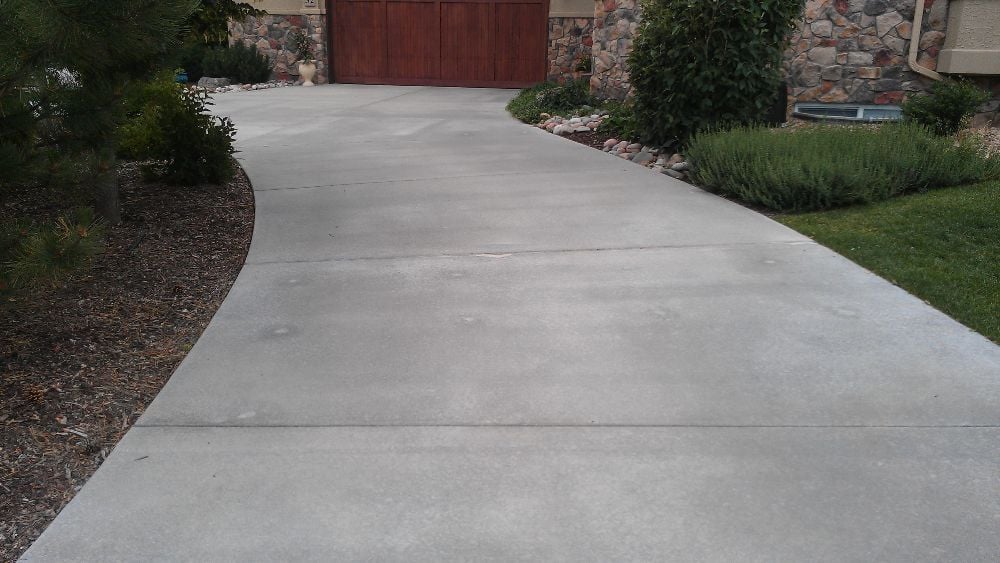
Considering stone slurry grout leveling for your settled concrete? Learn all about its advantages and disadvantages.
From the tragic thought of loved ones tripping and falling when visiting, to the fear of what could happen if a neighbor isn’t watching their footing when walking in front of your house, concrete leveling can help put your mind at ease.
Concrete leveling is a cost-effective and convenient way to eliminate dangerous trip hazards and unsightly concrete, and there are a few common methods for going about it.
Here at A-1 Concrete Leveling, we’ve been perfecting our stone slurry concrete leveling process for over 30 years, and it’s the primary method we use to lift sunken concrete slabs.
In addition to stone slurry concrete leveling, we sometimes also use foam leveling when necessary, and other companies perform a leveling process called “mud jacking”.
Each of these concrete leveling methods comes with its own set of advantages and disadvantages, and before choosing a company to work with for your repair, it’s important to learn about them. In this article, we’ll tackle stone slurry leveling.
How Does Stone Slurry Grout Leveling Work?
It’s important to understand the basics of how stone slurry grout leveling works before jumping into its pros and cons.
We have an in-depth guide to understanding how our stone slurry grout leveling process works, but the steps are summarized here:
- Strategic holes ~1 inch in diameter are drilled in the settled slabs.
- A thick mixture of limestone and water is slowly pumped through the holes, filling any voids under the slab. Once the voids are filled, the backpressure from the limestone slurry lifts the slab into a level position.
- The area is cleaned off and drill holes are patched.
Overview of Stone Slurry Grout Leveling Pros & Cons
| Pros | Cons |
|---|---|
|
|
|
|
|
|
|
Pros of Stone Slurry Grout Concrete Leveling
-
Strong, durable repair
The limestone slurry compound uses pulverized natural limestone, which dries to become a dense solid and is stronger than both mud jacking and foam leveling. This creates higher compressive strength and allows it to withstand heavier downward pressure, like heavy vehicle traffic, large porches, and weight-bearing posts.
The limestone slurry compound also has a much higher chance of filling the entire void below the surface due to its lower pump pressure and consistency, which helps create a stronger base and prevents future cracks.
A-1’s stone slurry grout leveling repairs can last for the entire life of the concrete slab itself, as long as the ground it’s sitting on is stable.
-
Can handle more complex jobs
Because the limestone slurry compound is pumped with low pressure through small holes, it is much easier for concrete leveling technicians to control the lift. When the pump is switched off, the lifting stops, greatly reducing the risk of overdoing the repair.
In repairs that have a lot of complex and delicate parts to watch out for, like pool decks, for example, it’s better to have a low-pressure and low-speed concrete leveling option.
-
Locally-sourced materials
The limestone used in the limestone slurry compound comes from local quarries near each franchise. Instead of shipping big loads of material from one place, the A-1 team supports the local economy in each of its regions across America.
-
Environmentally friendly
The limestone slurry compound is made of 100% natural and environmentally-friendly materials. The limestone powder has no synthetic or harmful chemicals and can be washed safely away with water when the job is done.
In fact, the limestone slurry compound uses agricultural lime as its main ingredient, which is used as a soil amendment to promote healthy plant growth!
Cons of Stone Slurry Grout Leveling
-
Larger drill holes than foam leveling
While still smaller than the holes drilled for mud jacking repairs, it’s worth noting that limestone slurry drill holes are larger than those drilled for foam leveling. The difference between the ⅝” foam leveling holes vs. 1” limestone slurry holes may be an important consideration for some repairs.
-
More expensive than mud jacking
Because the limestone slurry leveling system is a more refined take on traditional mud jacking, it’s typically more expensive than that option. While generally still much cheaper than foam, the limestone slurry method can be beaten in price by mud jacking.
Learn more about the cost of concrete leveling.
Your Next Steps
At the end of the day, the goal of any professional concrete leveling repair should be to eliminate safety concerns and restore the looks of your concrete.
Foam leveling, mud jacking, and A-1’s stone slurry grout leveling process all aim to achieve that goal, but it’s important to weigh the pros and cons of each method to see if they align with what you would like to get out of your repair.
If you’re interested in seeing what concrete leveling can do for your settled concrete, click the link below to request a free onsite concrete inspection and cost estimate with one of A-1’s expert team members!
A-1 Concrete Leveling has an entire library of resources to help you learn as much as possible about concrete repair and maintenance. Check out some of these related Concrete Academy topics:
Sarah Etler joined A-1 Concrete Leveling after receiving her Bachelor of Arts degree in English from Northern Kentucky University. As A-1's Content Marketing Manager, she works closely with industry experts to produce content that will best answer questions related to concrete repair and maintenance practices. Sarah loves living a life full of discovery and is excited every day to see what new things she can learn and share with those around her.